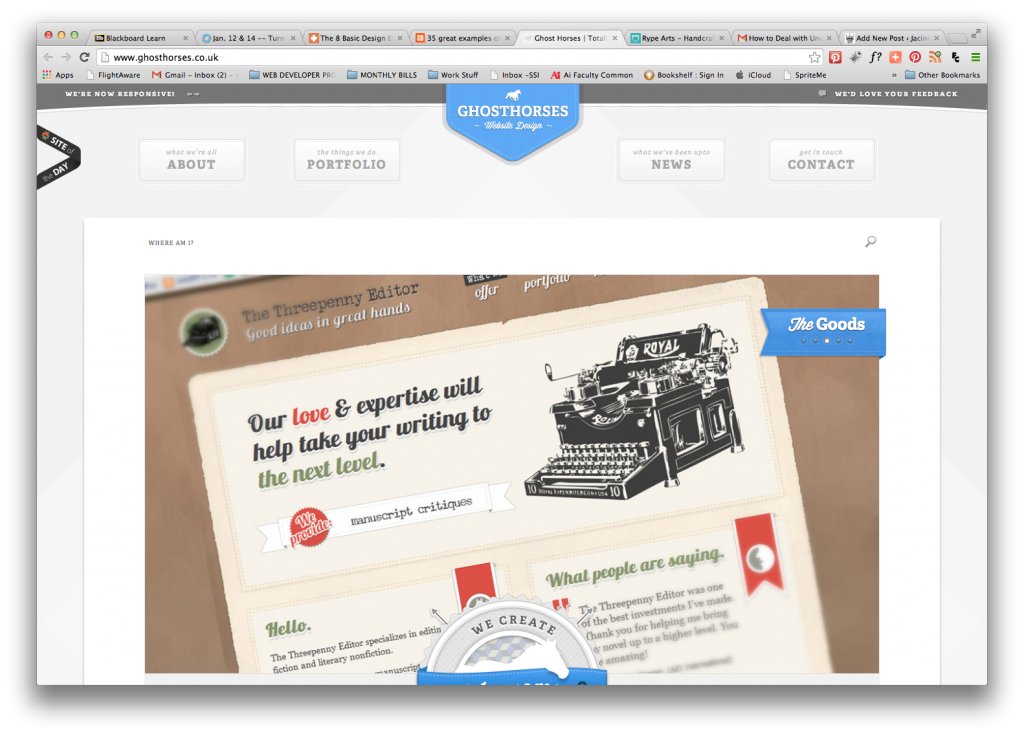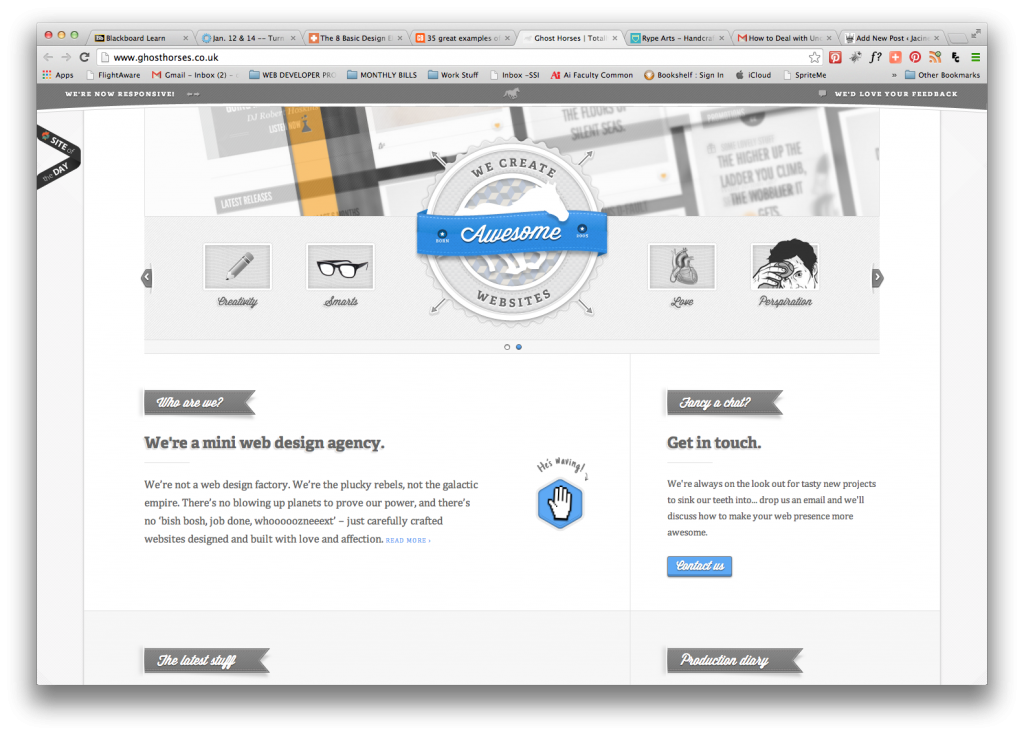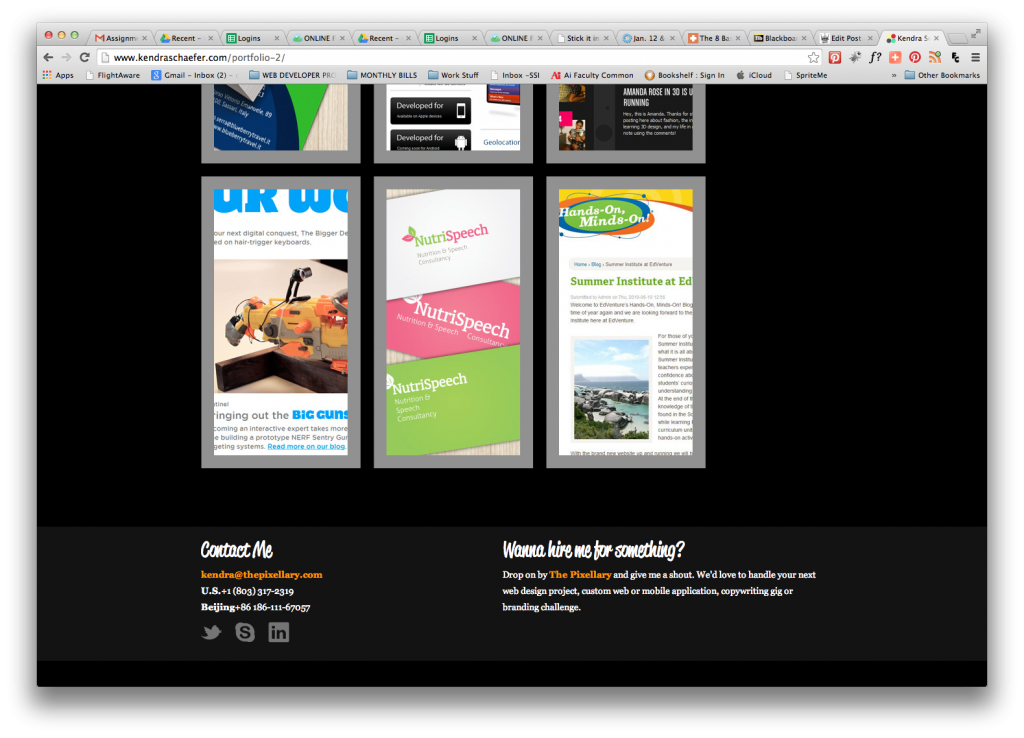The article “Never Heard of It” by Lyza Danger Gardner, mentions some terms which I’ve heard of but couldn’t actually explain and others that I’m more familiar with.
- SASS- is a preprocessor, which allows you to use features that don’t exist in CSS yet. It offers more functionality to CSS such as variables, nesting, partials, import, mixins, extend/inheritance, operators (http://sass-lang.com/). Before you can use SASS, you have to set it up on your project.
- Webkit- is an open source web browser engine, which allows web browsers to render web pages.” It powers Safari & Google Chrome to name a few. (http://www.webkit.org/)
- RSS feeds- are parts of a website, blog, content that are made available through automatic syndication which then appears as an item in an RSS reader (news aggregator). It stands for “Really Simple Syndication”. It enables publishers to syndicate data automatically. Users subscribe to a feed. The reader checks the users feed on a regularly and updates itself. (http://searchenginewatch.com/article/2065614/Making-An-RSS-Feed)
- Feedly- is a news aggregator app for web browsers and mobile devices. It works similar to an RSS feed. It compiles news from online new sources all across the web. Users can customize and share with each other.
Of all these I will mostly likely try SASS because it does make CSS much more functional. I have used WebKit or at least the syntax in CSS but I don’t think that I would use it to build my own search engine. I signed up for Feedly. I think that it will be helpful with at least keeping me up-to-date with the latest trends. (At least that is my hope).
Web/Design Development is somewhat of a moving target. Just when you think you know something or have mastered something, five new “must know try” things are launched. The best way to stay on top of the latest and greatest is either to be involved with it or to stay connected with the industry. My approach will be to remain active with industry forums and groups, signup for a Feedly account and specify areas of the industry that interest me, keep up with Mashable and maintain both an account on Lynda.com and Treehouse. It’s a lot to do and keep up with but this industry is evolving exponentially and if you don’t make an effort to keep up with the “pace group” or at least have them in your line of sight, you will be left behind very quickly.
To get the ball rolling and add one more thing to my information overload, I set up RSS Feed Reader on Google Chrome since that is my browser of choice. The good thing about it, is that it collects the links, articles topics based on things I’m interested in. I don’t have to search or save anything because it does it for me.
Keeping up with the John & Jane Q. Techie
Making the case for keeping up with the industry in not difficult. You can find a plethora of articles on the subject. Here are some links to a few:
Here is a good video presentation I found called “How To Stay Up To Date With Web Technology”
Here’s a recent article called “Why Web Designers Must Keep up With Technology”
“The web has evolved long past where the languages on offer were Perl or PHP. Granted, it’s not easy to start learning, but the reward makes it worth it. We’re in a booming industry where more tools are coming out than most people can keep up with, but those who do keep up get the best jobs and clients.” (Inglis)












